Le duo formé par Ken Stringfellow et Jon Auer semble vivre ses dernières heures. L’enregistrement de Success n’est pas une sinécure et est considéré, à l’époque, comme le dernier disque du groupe. Évidemment, il n’en sera rien. En 2018, le groupe fête ses trente ans d’existence en parcourant les Etats-Unis et en rééditant son catalogue Geffen (Dear 23, Frosting on the Beater et Amazing Disgrace). En 1998, comme en 1988, les Posies font fi des modes et enregistrent leurs chansons. Retour sur l’enregistrement de ce disque avec Ken Stringfellow, Joan Auer et Johnny Sangster.
Ken Stringfellow
Pourquoi avez-vous quitté Geffen et surtout comment êtes-vous arrivés chez PopLlama ?
Ken Stringfellow : PopLlama était le label sur lequel nous voulions être signés. Quand le groupe a commencé en 1988 (enfin en 1987 mais chut) nous n’avions que deux buts : nous voulions être programmés au Bumbershoot Festival de Seattle où nous allions voir des concerts et nous voulions être sur PopLlama, le label des Young Fresh Fellows, des Fastbacks, des Squirrels, de Jimmy Silva et de tous les autres groupes du coin dont nous étions assez fan. Il faut que tu aies à l’esprit qu’en 1987 SubPop existait à peine et avait sorti un seul disque qui était une compilation. Nous connaissions Scott McCaughey, qui était non seulement dans les Young Fresh Fellows mais qui tenait le label avec Conrad Uno. Il travaillait aussi chez un disquaire du nom de Cellophane Square. Quand nous avons sorti la cassette Failure au début de 1988, nous nous sommes assurés de la déposer le jour où il travaillait. Scott a signé notre première critique dans la presse musicale locale et a programmé notre premier concert. Et il a soufflé notre nom à Conrad pour qu’il sorte notre premier disque en vinyle.
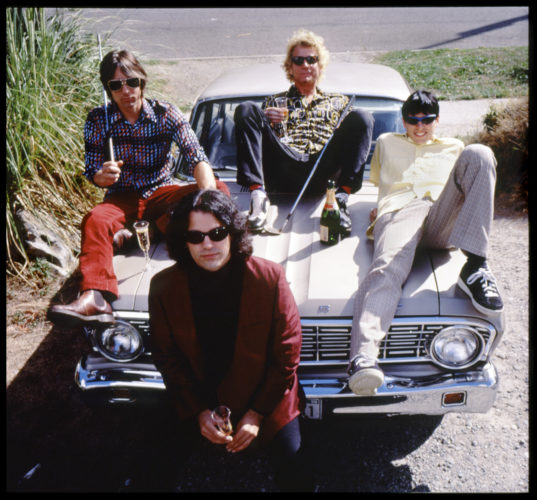
Pour ce qui est de Geffen, ce n’est pas ma décision. Ils n’ont pas voulu sortir Amazing Disgrace en clip et c’était certes assez frustrant… Mais en même temps, nous avions un énorme contrat de publication et d’enregistrement qui nous aurait donné… un demi-million de dollars pour tout ce que nous devions sortir. Ceux d’entre nous qui ne voulaient pas être frustrés n’en ont pas tenu compte et ne savaient même pas où aller. Et nous nous sommes retrouver chez PopLlama. Signer chez PopLlama était synonyme de retour à la maison. C’était certes plus simple pour nous mais nous avons perdu la distribution de nos disques à l’étranger. Cela a compliqué les choses pour le développement du groupe.
Et comment avez-vous rencontré Conrad Uno et Johnny Sangster ?
Scott nous a présentés à Conrad mais honnêtement, Seattle était à l’époque une jolie petite ville et nous aurions fini par nous rencontrer. Johnny est le frère de Jim Sangster que nous connaissions déjà. Il était membre des Young Fresh Fellows. Nous aimions bien ce groupe ! À l’époque Johnny vivait à Copenhague et avait un super groupe appelé Sharing Patrol. Nous l’avons donc rencontré avec son groupe quand nous avons commencé à faire des tournées en Europe au début des années 90. En 1997, sa famille et lui ont déménagé à Seattle. Il était intéressé par l’ingénierie et la production et nous offrait ses services… gratuitement ! Comment aurions-pu dire non? C’était le premier album qu’il enregistrait.. Il a fait un excellent travail !
Comment s’est passé l’enregistrement de ce disque ?
Ce fut assez facile. Success est composé pour l’essentiel de chansons que nous avions pour habitude de jouer en live. C’était d’ailleurs pour cette raison qu’elles ne figuraient sur aucun album. Elles n’auraient pas supporté le traitement infligé par nos précédents producteurs. Il s’agissait donc de chansons assez spéciales pour nous. Elles ont été enregistrées ainsi car nous étions un groupe solide et bien rodé.
Il vous a fallu combien de semaines pour enregistrer Success ?
Ce ne fut pas long. Je pense que nous eu besoin de quatre semaines pour faire l’album. Nous avons travaillé deux semaines, pris deux jours de repos et nous avons de nouveau travaillé deux semaines. Pendant ces deux semaines, Brian Young (notre batteur) et moi avons enregistré, avec Pat Fear de White Flag et Javier Escovedo des Zeros, l’album I Am Ben Hur sous le nom de Chariot ! Nous avons enregistré seize chansons en deux jours.
Chariot – You’re So Fine
Quelles sont meilleurs souvenirs de l’enregistrement ? Quelles ont été vos difficultés ?
Eh bien, je vais dire l’enthousiasme de Johnny. Cela m’a bien aidé. J’étais encore un peu déconcerté du chemin que nous avions pris et je n’étais pas très ravi de l’état dans lequel nous nous trouvions. Je n’ai pas énormément de souvenirs en ce qui concerne l’enregistrement en lui-même mais je me souviens d’un micro qui a fini dans le sèche-linge. Le studio, Egg Studios, était dans le sous-sol de la maison de Conrad Uno (malheureusement il n’est plus là) car Conrad et sa femme Emily ont pris leur retraite cette année et je crois qu’ils ont déménagé en Arizona!). Honnêtement, j’ai plus de souvenirs de l’enregistrement de l’album de Chariot. Pour le coup, c’est un disque que je voulais faire. Ce n’est pas le cas de Success. Si j’avais eu toutes mes capacités, nous aurions fait un autre disque pour Geffen. Je ne veux offenser personne mais cela aurait eu une autre gueule.
Comment avez-vous trouvé le son Success ?
Comme je te le disais, tout est dû au super boulot que Johnny a réalisé. C’est incroyable… Surtout quand tu sais qu’il s’agit de sa première production. Le groupe sonne bien de surcroît. La qualité est incroyable.
Pourquoi avoir appelé ce disque Success ?
On pensait que ça serait notre dernier album. Le titre est aussi ironique que celui de notre premier album, à savoir Failure. Il illustre bien le cynisme de Jon et son mécontentement.
Quelle est l’histoire de la chanson Placebo ? C’est ma chanson préférée sur ce disque
Seul Jon pourrait répondre à cette question.
Quelle est ta chanson préférée de cet album ?
You’re the Beautiful One. C’est une chanson à la fois douce et puissante. Et c’est une chanson sincère. Elle est à l’image de nos concerts. C’est un morceau icontournable de nos concerts et je la joue même pendant mes concerts solo. Ses paroles, qui évoquent la notion de perte, sont très touchantes.
The Posies – You’re the Beautiful One
Johnny Sangster
johnnysangster.com
Johnny Sangster a travaillé avec Mudhoney, Mark Lanegan et les The Posies. Il a enregistré, avec Conrad Uno, Success.
Comment as-tu rencontré Ken et Jon ?
Johnny Sangster : Conrad Uno avait enregistré mon groupe The Sharing Patrol en 1983 et la cassette était sortie sur PopLlama Records. J’avais déjà déménagé à Copenhague au moment où les Posies ont commencé à jouer dans le coin de Seattle, mais j’ai continué à entendre parler d’eux par des amis. Quand leur premier album est sorti, j’ai été très impressionné. Dear 23 et Frosting On The Beater sont d’excellents albums. J’ai rencontré Ken lors d’un voyage à Seattle lors d’un barbecue chez mon frère Jim. Plus tard, quand ils sont venus au Danemark, ils ont ouvert pour Sharing Patrol. En 1992, nous avons fait le déplacement à Seattle pour enregistrer Take You There avec Kurt Bloch et Ken a fait une apparition en tant qu’invité. Finalement, je me suis sérieusement intéressé à l’ingénierie en studio et quand je suis revenu à Seattle en 1997, j’ai demandé à Conrad si je pouvais aider au studio. Il a dit que les Posies commençaient à travailler sur leur « album de rupture » et que je pouvais venir donner un coup de main.
Comment as-tu trouvé le son de ce disque ?
J’étais encore assez novice en tant qu’ingénieur. J’avais fait des démos à 4 pistes, en avait produit un ou deux groupes au Danemark et j’avais des idées. J’ai également eu la chance de travailler avec de grands producteurs et de grands ingénieurs quand j’étais dans les The Sharing Patrol. Je savais comment obtenir des prises, prendre des décisions et je savais quels sons j’aimais. Le fonctionnement du studio était un peu plus mystérieux pour moi. Je dois dire que Jon et Ken étaient bien plus experts que moi sur cette question. Je formais une bonne équipe avec Conrad : il vérifiait la qualité de mon travail et répondait à mes questions stupides. Le studio Egg était installé en sous-sol, sous la cuisine de Conrad et Emily. En écoutant ce disque aujourd’hui, je suis étonné : il sonne vraiment bien. Jon et Ken avaient appris des trucs en cours de route et utilisaient des éléments lo-fi de façon récréative. Ils installaient un micro dans le couloir et chantaient de l’autre côté du micro. Ils avaient un petit magnétophone avec un micro intégré qui avait une compression folle. Ils ont construit pas mal de boucles pour commencer des chansons – comme celles que tu peux entendre sur You’re The Beautiful Once et Who To Blame.
Quel matériel as-tu utilisé ?
Les studios Egg étaient à cette époque les bureaux de SpectraSonics. Il y avait une console Tascam de 16 pistes synchronisée avec une Tascam DA88 pour 8 pistes supplémentaires. Cela semblait vraiment très bien. Par contre, il n’y avait pas énormément de micros. Nous avons utilisé un assortiment d’amplis mais surtout des petits. Je peux te raconter une histoire amusante à propos de Start A Life, quand nous l’avons fini, nous avons senti qu’il avait besoin de quelques crashs de cymbales supplémentaires. Je suis allé à l’étage pour demander à Uno s’il avait une cymbale de rechange cachée quelque part – ce qu’il n’a pas fait mais il avait une suggestion – pourquoi ne pas sortir un micro et faire un « pshhhhh » avec la bouche ? C’est ce que vous entendez sur la piste. Jon a ensuite fait le mix et les overdubs. Et il m’a impressionné!
Quels sont tes meilleurs souvenirs liés à cet enregistrement ?
Brian Young et Joe Skyward étaient super gentils avec moi et ont été très efficace. Je me disais que j »étais très honoré d’être avec le groupe quand je les regarder. J’étais très excité à l’idée d’enregistrer certains des solos de Jon. Je me souviens aussi des parties vocales de Ken. Il chantait avec ses mains. C’était une technique de visualisation. C’était fascinant à regarder. A l’époque ils pensaient que ce serait leur dernier album. Il y avait des chansons qui étaient enregistrées pour des projets solo et cela me rendait assez triste. A posteriori, c’est assez drôle car ils ont continué à faire de bons disques.
Quelle est ta chanson préférée de ce disque ? Pourquoi ?
Je pense que ça doit être You’re The Beautiful One. J’ai de bons souvenirs de la façon dont cela s’est déroulé et surtout de la surprise que j’ai ressentie. De la première piste de batterie – avec Ken qui manipule l’égaliseur de balayage comme une pédale wah wah – aux différentes couches de batterie, pour finalement enregistrer toutes les voix et comment tout cela s’est déroulé dans le mixage. J’aime la vulnérabilité que tu peux ressentir dans la performance vocale. Ces gars étaient au bout du rouleau et étaient donc prêts à prendre des risques. J’ai juste eu la chance d’être là.
Jon Auer
Qui a enregistré ce disque ?
Jon Auer : Success a été avec le même line-up que celui d’Amazing Disgrace : moi-même, Ken et Joe Skyward à a basse et Brian Young à la batterie.
Comment as-tu vécu l’enregistrement de ce disque ?
Si je me souviens bien, l’enregistrement a été facile, mais les circonstances entourant la création de ce disque étaient difficiles, car le groupe était sur le point de se séparer à ce moment-là. Je me rappelle que nous avions convenu de faire un dernier enregistrement et qu’après nos routes se sépareraient. Après avoir terminé les tournées d’Amazing Disgrace, un disque qui a bien marché en Europe mais pas aussi bien aux Etats-Unis, nous n’étions pas sûrs de ce qu’il fallait faire et je n’étais très enclin à faire un autre disque pour DGC/Geffen. On s’est donc dit que nous allions retourné chez Popllama, le label indépendant de Seattle qui avait publié notre premier album.
De mon point de vue, nos intentions étaient nobles. Nous voulions «revenir à nos racines». Mais la communication entre les membres du groupe, en particulier entre Ken et moi, n’était vraiment pas très bonne à ce moment-là. En fait, beaucoup de sessions ont été faites séparément. Je pense que Ken et moi avons seulement passé quelques jours ensemble. En fait, je ne joue pas sur You’re The Beautiful One mais je joue intégralement sur Every Bitter Drop. C’est un peu ma démo.
Grow est juste ma démo avec la batterie de Brian Young et la basse de Joe Skyward qui ont été ajoutées après coup en studio. Ken a chanté dessus. J’ai enregistré et fait les overdubs de Start a Life. Brian et Joe et moi avons ajouté les claviers après. Autre chose importante… A l’exception de Start a Life et Every Bitter Drop (que j’ai mixée), je n’étais pas là pour mixer le reste du disque. C’est notre producteur et ami Johnny Sangster qui s’en est chargé et qui l’a bien fait. Le son de Start a Life est différent des autres chansons du disque. Tu en connais désormais la raison.
Quels sont tes meilleurs souvenirs de cet enregistrement ?
L’enregistrement de Start a life a été un moment fort. Son son et son groove sont uniques. Et cela, grâce à Joe et Brian. Nous avons passé un très bon moment, c’était très « sans souci ». Il y avait aussi une session amusante où Ken s’est arrêté pour ajouter ses voix d’harmonie et une ligne de clavier à Start a Life qui, étant donné les circonstances et la tension que je pense qu’il y avait en général entre nous, semblait vraiment agréable toutes les personnes. Je dois dire que cela n’a pas été facile pour Johnny Sangster qui a dû gérer certaines sessions assez difficiles, et je me dois encore de le féciliter. Il a fait avancer les choses grâce à sa patience et son talent.
Il faut garder à l’esprit que Success est un disque essentiellement composé de chansons qui ont été abandonnées à d’autres époques. Il s’agit de chansons qui n’ont pas été sélectionnées et mises sur Frosting On The Beater ou Amazing Disgrace pour une raison ou une autre. Quand tu prends cette donnée en considération, tu comprends pourquoi ce disque sonne de cette manière. Mais grâce à ça, il resiste très bien au temps.
Quel matériel avez-vous utilisé pour l’enregistrement ?
Nous nous sommes tous retrouvés dans le légendaire Egg Studios de Seattle, un studio où nous avons tous travaillé et où j’ai mixé et enregistré de nombreux disques pour d’autres groupes. Conrad Uno, le propriétaire du studio, était un vrai mentor et pendant un moment, son studio était comme une seconde maison pour moi. Success a été fait dans les jours précédant Pro Tools, nous avons donc utilisé une machine Tascam BSR 1/2 inch 16 pistes synchronisée avec un ou deux DA-88, je pense pour un total de 30 pistes, la moitié analogique, l’autre moitié numérique. Un truc de fou ! La partie cool était en train d’enregistrer à travers une grande vieille console Spectrasonics vintage qui avait un peu d’histoire car elle était faite sur mesure pour les studios Stax / Volt et apparemment Paul Mc Cartney y avait même apporté une légère modification, ajoutant un pitch connu pour toujours savoir comme « Paul’s Knob » … (si vous étiez britannique vous sauriez à quel point cette phrase pourrait être drôle.
À ce moment-là, la console Stax n’était pas la meilleure pour mixer car elle n’avait pas assez d’entrées pour mixer notre disque, donc tout est passé par une console Mackie 32 canaux.
Quelle est ta chanson préférée de cet album ?
Pour moi, je vais dire la version de Start a Life de Success. L’enregistrement est si unique et si différent de tout ce que nous avons fait. Every Bitter Drop est une autre de mes chansons préférées. En ce qui concerne les chansons de Ken, je vais dire You’re The Beautiful One et j’ai toujours aimé Fall Song. C’était un excellent moyen de fermer l’album.
The Posies – Start A Life
Et Placebo ? C’est ma chanson préférée de cet album.
Si je me souviens bien, une partie de cette chanson est en fait l’une des premières choses sur lesquelles Ken et moi avons collaboré, dans notre adolescence, et en fait elle a commencé avec une partie de piano de Ken qui est au final devenue le refrain… Dans ma mémoire, je pense que ça ressemblait à une chanson Tears For Fears à ce moment-là ! Au fur et à mesure de ces trucs, ça m’a traversé la tête plusieurs années plus tard et j’en ai fait toute une chanson à la guitare et il y a une démo que j’ai faite avec tous les instruments qui est très proche de l’enregistrement final. Je ne pourrais pas te dire ce que signifie spécifiquement la chanson, mais il y a aussi une certaine qualité de mélancolie que je raconte aussi. Les mots me semblaient justes émotionnellement avec la mélodie. C’est donc ce que j’ai chanté.
The Posies – Placebo
The Posies - Success
Success des Posies est disponible chez PopLlama.
Les clichés sont signés Bootsy Holler.
Les albums des Posies des années 90 sont réédités chez Pledge.
- Somehow Everything
- You're The Beautiful One
- Looking Lost
- Fall Apart With Me
- Placebo
- Who To Blame
- Start A Life
- Friendship Of The Future
- Grow
- Farewell
- Typewriter
- Every Bitter Drop
- Fall Song
English text
Ken Stringfellow
Why did you leave the record company Geffen ? How did you meet the team of Popllama ?
PopLlama was the label we wanted to be on from the beginning, when the band started in 198(well, 7, really, but shhh) we had only two goals: we wanted to play a music festival called Bumbershoot in Seattle that we loved going to, and we wanted to be on PopLlama, home of the Young Fresh Fellows, the Fastbacks, the Squirrels, Jimmy Silva and many other local artists we admired. Remember in 1987 SubPop barely existed, having only released one compilation album so far. So, we knew Scott McCaughey, who not only was in the Young Fresh Fellows but kind of ran the label with Conrad Uno, worked at the Cellophane Square record store. So, when we had made the « Failure » cassette release in early 1988, we made sure to drop them off on a day he was in. It was Scott who gave us our first review in the local music press, and Scott who gave us our first gig, and Scott who pushed for Conrad to release this cassette as an LP, which he did, later that year.
As far as leaving Geffen — it wasn’t my choice; it’s true that they didn’t want to make a video for « Amazing Disgrace » and this was frustrating…but at the same time we had an enormous publishing and record deal that would have handed us…. half a million dollars for whatever we were to release next, and those of us in the band who wanted to leave in frustration not only didn’t take that into account but didn’t have anywhere even remotely well thought out to go from there. Even tho, yes, PopLlama was like coming home to a simpler situation, it wasn’t going to be growing for us and it made all our deals — overseas, etc, very complicated.
How did you meet Conrad Uno ? And Johnny Sangster ?
So, It was Scott who introduced us to Conrad but honestly Seattle was at that time a pretty small town — it would have happened! Johnny is the brother of Jim Sangster who we already knew, like Scott, as a member of the Young Fresh Fellows. We loved this band! At the time Johnny lived in Copenhagen and had a great band called the Sharing Patrol, and when we started touring Europe in the early 90s we met him and his band there. In 1997 he and his family had just moved back to Seattle, and he was interested in getting into engineering and production, and offered his services to us… for free! How could we say no? It was the first album he had actually engineered, and considering that, he did an incredible job!
How easy was the recording process of Success ?
Considering that — it was easy. A lot of Success is comprised of songs we’d been playing live for years — generally the reason these songs didn’t appear on earlier albums is that they weren’t supported by the various producers of our previous albums. But the songs were special to us. But we were a well rehearsed, very solid live band so we recorded like this.
How did long it take you ?
Not long. I think we spent a very luxurious 4 weeks making the album — 2 weeks, then 2 days off, then 2 weeks. In those two weeks Brian Young –our drummer, & I, with « Pat Fear » of White Flag and Javier Escovedo from the Zeros made the album « I Am Ben Hur » as the group Chariot! Recorded 16 songs in 2 days!
What are your best memories of this recording process ?
Well, Johnny had so much enthusiasm and that helped — I was still a bit baffled why we had chosen this path and thus maybe wasn’t so enthusiastic about where we found ourselves. I don’t have a ton of memories about the recording process itself but I do remember a mic ending up in the clothes dryer (The studio, Egg Studios, was in Conrad Uno’s basement. Unfortunately, it’s no longer there — Conrad and his wife Emily retired this year and I believe have moved to Arizona!) to make a kind of comb filter. I have more memories of the Chariot album, honestly — That was made by my choice, whereas with the Posies album if I’d had my druthers we’d have made another album for Geffen in bigger circumstances. No offense to anyone involved, but that would have been the smartest move.
What were your difficulties ?
see above! mostly emotional at this point.
How did you find the sound of this album ?
Like I said, it’s a really great job Johnny did — considering this was his first production, it’s incredible. And the band sounds great. I think it’s absolutely fine, in terms of quality.
What’s the reason behind the title album ?
Well, it was considered to be our last album — as ironic as the Failure title of our first album was, this was also meant to be ironic. I think it was an example of my bandmate’s cynicism and general unhappiness.
What’s the story of Placebo song ? It’s my favorite song of this LP.
Have to ask Jon Auer about that one! It’s a nice song. We used to play it quite often in that time.
And you… What your favorite song of this LP ?
I think « You’re the Beautiful One » — it’s very sincere, it’s gentle but powerful. It is a staple of our live shows and even my solo shows to this day. I think it has some very touching lyrics about loss.
How did you meet Ken & Jon ?
Johnny Sangster : Conrad Uno had recorded my band The Sharing Patrol in ’83 and put out a cassette on PopLlama records. I had already moved to Copenhagen by the time the Posies started playing around Seattle but I kept hearing about them from friends. When their first record came out I was pretty floored. And Dear 23 and Frosting On The Beater – man they were so great. I met Ken on a trip back to Seattle at a barbecue at my brother Jim’s. Later when they came to Denmark, the Sharing Patrol would open shows for them. In ’92 we made a trek to Seattle to record « Take You There » with Kurt Bloch and Ken made a guest appearance. Eventually I got serious about studio engineering myself and when I moved back to Seattle in ’97 asked Conrad if I could help out at the studio. He said the Posies were starting up work on their “breakup album” and I could come lend a hand.
How did you find the sound of this LP ?
I was still fairly novice as an engineer. I had made a 4-track demos, had produced a couple while in Denmark and had ideas. I had also had a chance to work with some great producer / engineers during the Sharing Patrol phase. I knew how to get takes, make decisions and I knew what sounds I liked. How the gear worked was a bit more of a mystery for me. I have to say that Jon & Ken were far ahead of me on that front. We would sort of tag team the engineering chores with Conrad checking in as quality control and answering my dumb questions. Egg studio is a tiny basement studio directly below Conrad and Emily’s kitchen and hearing that record now, it amazes me how big it actually sounds. Jon & Ken had learned some tricks along the way, using lo-fi elements in creative ways, a mic in the hallway, singing into headphones as a mic etc. They had a little cassette recorder with a built in mic that had crazy compression. They were also into building loops to start songs – like the one you hear in You’re The Beautiful Once or Who To Blame.
Which material did you use (desk, amps) ?
Egg at that point was the SpectraSonics desk (originally built for Stax Studio in Memphis), a 1/2” 16 track Tascam tape machine which was synced up to a Tascam DA88 for an additional 8 tracks. It actually sounded pretty good – especially that Stax board. The mic collection was not fancy. We used an assortment of amps but mostly little ones. One funny story about Start A Life, when we were finishing it up we felt it needed a few extra cymbal crashes. I went upstairs to ask Uno if he had a spare cymbal stashed somewhere – which he didn’t but he did have a suggestion – why not just get out a mic and make a “pshhhhh” sound with your mouth? That’s what you hear on the track (it has some fast panning on it too). Jon came up with all that dub stuff at the end while mixing – I was pretty blown away by that.
What are your best memories about this recording process ?
Brian Young and Joe Skyward were so great and kind to me. I really looked up to the whole band and was honored to be there. I was so thrilled to record some of those Jon solos and I remember Ken cutting vocals – he was doing this thing with his hands – kind of directing the pitch with hand movements. I think it was a visualization technique, and it was fascinating. But also his singing just blew me away. At the time they were considering it their final album. There were songs that were being saved for solo projects, and I remember being sad about that. It’s funny to think about now that they’ve continued to make great music for so many years since.
What’s your favroite song of this LP ? Why ?
I think it has to be “You’re The Beautiful One”. I have the most vivid memories of how it came together and how surprised I was by that. From that first drum track – with Ken manipulating the sweeping EQ like a wah wah pedal – to the different layers of drums, to finally recording all the vocals and how it all came together in the mix. I like the vulnerability that you can feel in the vocal performance. Those guys were on roll and so willing to take risks. I was lucky to be there.
Jon Auer
What was the Posies line-up in 1998 ?
Success was recorded by the same line-up that made Amazing Disgrace: myself, Ken, and Joe Skyward on bass and Brian Young on Drums
How easy was the recording process of Success ?
As I remember it, the actual recording of most of it was easy but the circumstances around the making of the record were difficult as the band was essentially on its way to being over at that time. I think we’d agreed to do one last record and and then « call it a day » as we say. After We’d finished the touring cycle for Amazing Disgrace, a record that did well in Europe but not so well in the US, we weren’t sure what to do and I was very vocal about not doing another record for DGC/Geffen and suggested we return to the label that put our first record out, the Seattle indie record label Popllama.
From my perspective, my intentions were nobel, to « return to our roots » etc but communication between band members, especially Ken and I, was really not so good by then. In fact, many of the sessions were done separate from each other, I think Ken and I only spent a few days, if that, working in the studio together in total. In fact, a song like « You’re The Beautiful One » I didn’t play on at all and the « Every Bitter Drop » is only me on all the parts, no one else – it’s my demo in fact.
« Grow » is also just my demo with Brian Young’s drums and Joe Skyward’s bass added on top in the studio plus a small harmony vocal from Ken, but even most of the harmonies on that are mine. « Start a Life » was tracked and overdubbed with only myself, Brian and Joe and I played every keyboard part on it but one.
Also different: with the exception of « Start a Life » and « Every Bitter Drop » (both of which I mixed) I wasn’t around for the mixing of the rest of the record, our good friend and producer Johnny Sangster did that as well. If you listen to « Start a Life » I think it really has a different sound from the rest of the record and that’s part of the reason why.
What are your best memories of this recording process ?
Tracking « Start a life » was definitely a highlight, it just had such a unique sound and groove and Joe and Brian « nailed it ». We had such a good time, it was very « care free ». There was also a fun session when Ken stopped by to add his harmony vocals and a keyboard line to « Start a Life » that, given the circumstances and how much tension I think there was in general between us then, seemed to be really enjoyable for everyone. I have to say, it couldn’t have been easy for Johnny Sangster to have to navigate the sessions at times, and I have to say kudos to him for being the producer and keeping things moving along with patience and grace.
Also something to consider: Keep in mind, Success is essentially a records-worth of songs that were « left-overs » from other recording eras our ours, songs that didn’t make it onto Frosting On The Beater or Amazing Disgrace for whatever reason even thought most of them were considered and many even previously recorded…I think that when you consider that, it makes sense why there is a slightly « grab-bag » feel to the record, but also, I think it holds up very well in spite of that fact.
What material did you use ? Wich control desk ?
We tracked it all at the legendary Egg Studios in Seattle, a studio we’d all worked at a lot and also a place I mixed and recorded many records for other bands as well. Conrad Uno, the owner of the studio, was a real mentor of mine and for a while his studio was like a second home to me. Success was made in the days before Pro Tools so we used a Tascam BSR 1/2 inch 16 track machine synced up with one or two DA-88s, I think for a total of 30 tracks, half of them analog, the other half digital – kind of crazy really! The cool part was getting to record through a great old vintage Spectrasonics console that had some really history as it was custom made for Stax/Volt studios originally and apparently Paul Mc Cartney had even made a slight modification to it, adding a pitch know which was forever know as « Paul’s Knob »…(if you were British you’d know how funny that phrase might sound.
At that point though, the Stax console wasn’t the best t0 mix through as it didn’t have enough working inputs to mix our record, so everything went through a Mackie 32 channel mixer off of tape.
How did you find the sound of this album ?
Personally, I think it most of it sounds pretty good considering the circumstances and how fast it was made…that said, hearing it now it could probably benefit a little from some modern mastering, but I think a majority of the tracks sound solid.
What your favorite song of this LP ?
Of mine, I might have to say the version of « Start a Life » found on Success just because the recording it is so unique and different from anything else in our entire catalog….beyond that « Every Bitter Drop » is also a favorite of my songs. As far as Ken’s contributions, I’d have to say « You’re The Beautiful One » and also I always enjoyed « Fall Song ». It was a great way to close the album.
And about « Placebo »?
As I remember it, part of this song is actually one of the earliest things Ken and I collaborated on, in our ‘teens, and in fact it started with a piano part of Ken’s that became the verse that I then added my falsetto melody too…in my memory, I think it sounded like a Tears For Fears song at that point! As these thing do, it popped into my head many years later and I made whole song out of it on guitar and there’s a demo I did with all instruments that is very close to the final recording in basic content too. I couldn’t tell you what the song means specifically, but there is a certain melancholy quality too it that I relate too. The words just felt right emotionally with the melody, so that’s what I sang.
The Pictures © Bootsy Holler

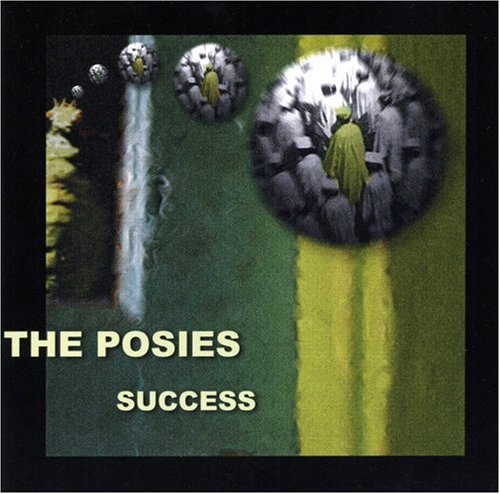
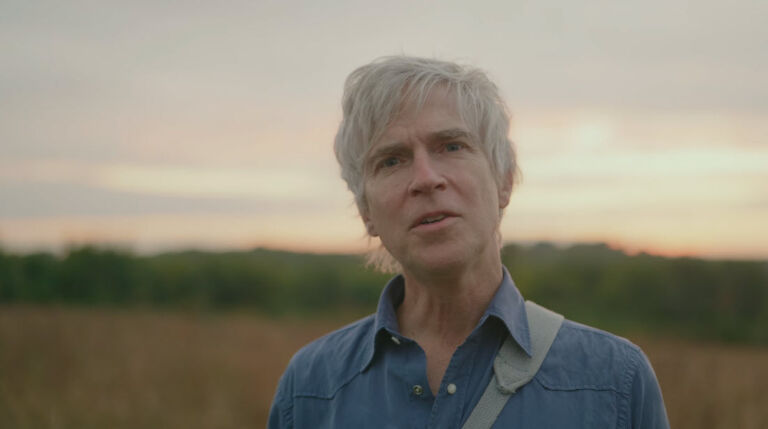


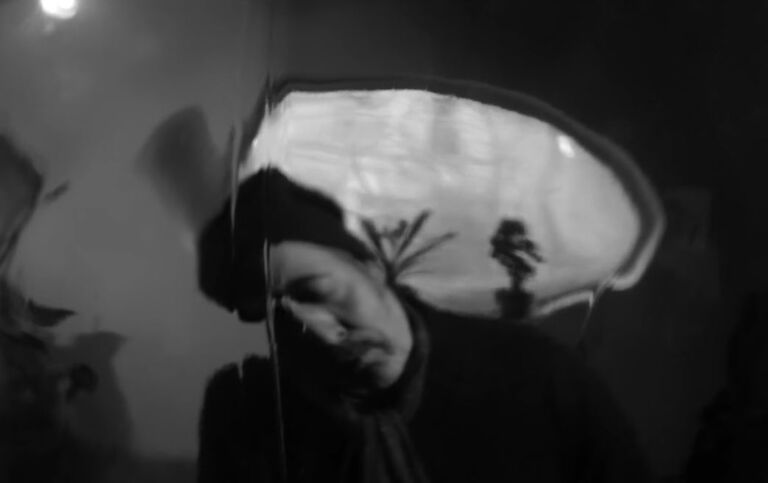
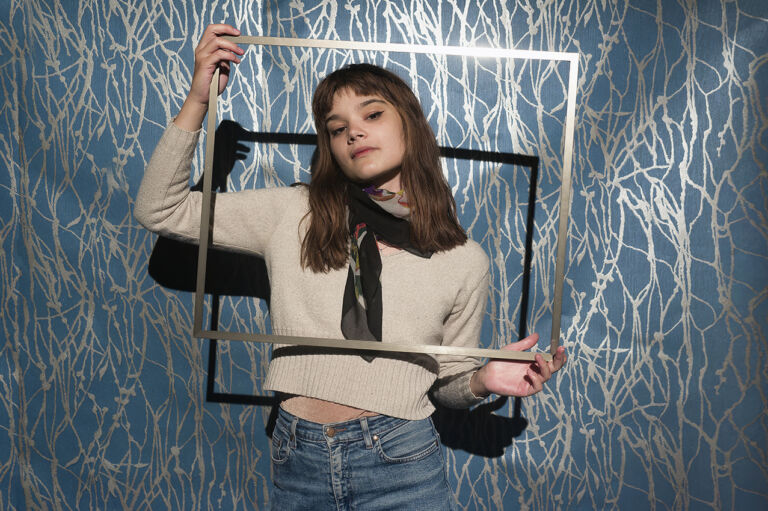
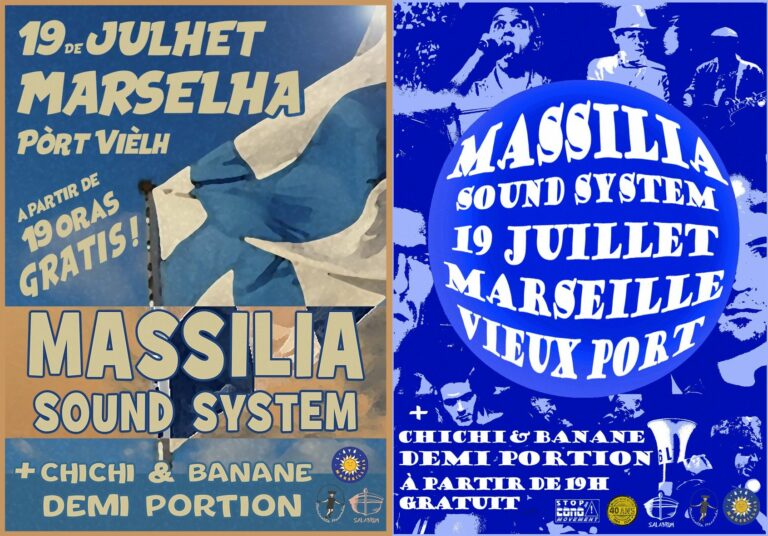
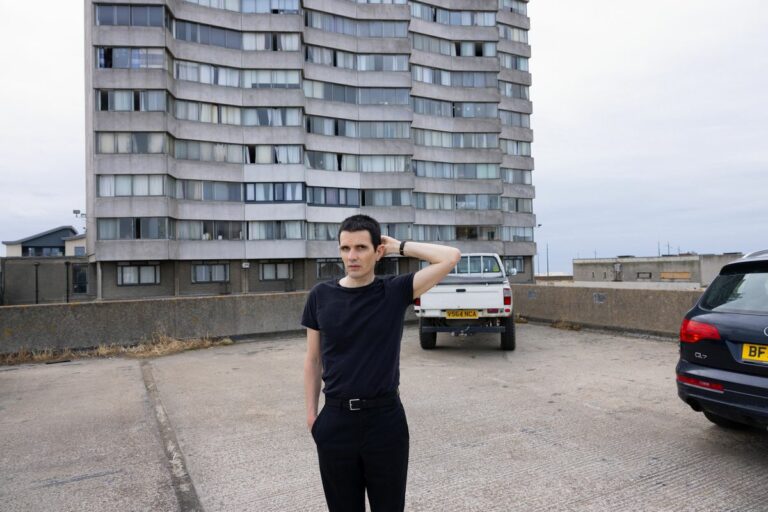
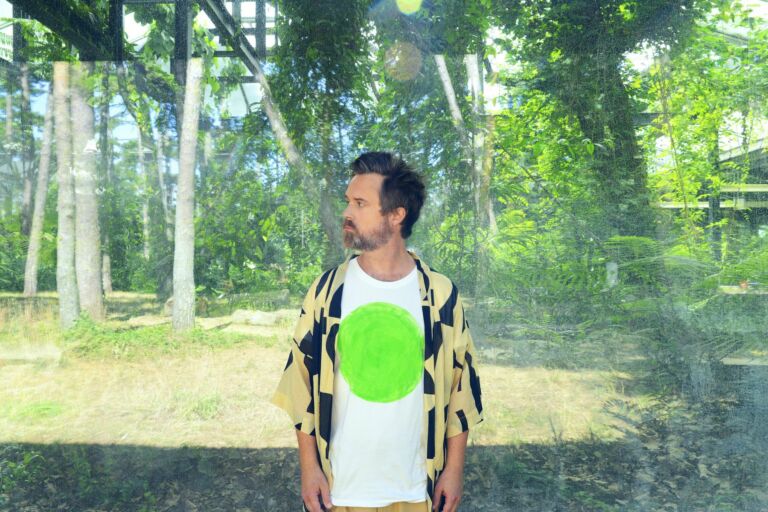
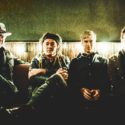 Nada Surf (e) toujours
Nada Surf (e) toujours [2008 – 2018] Tahiti 80, data center de la pop française
[2008 – 2018] Tahiti 80, data center de la pop française